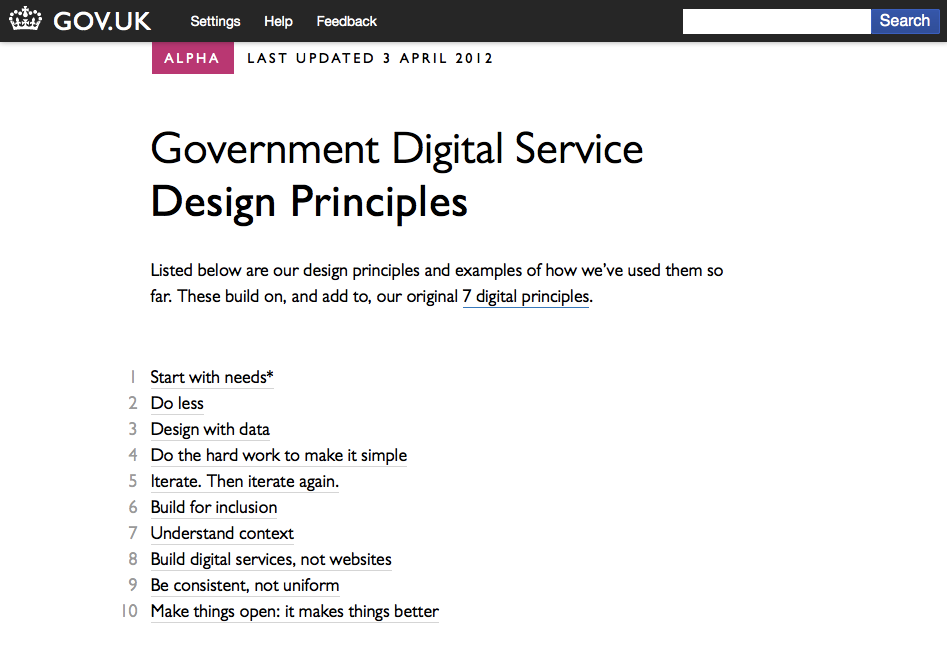Month: April 2012
-
GOV.UK’s Design Principles are big news for intranets
This week, the UK’s Government Digital Service unveiled a list of ten Design Principles. These are intended for for people building digital services under the GOV.UK domain, but I hope they will prove significant for absolutely anyone creating websites, intranets or other digital services, especially for those of us in-house. The principles are: Start with…
Written by
